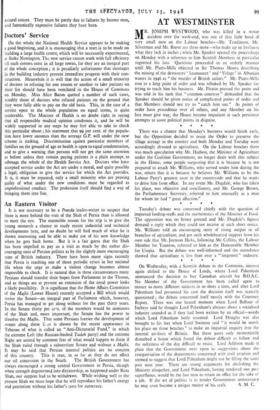Decline of the Tudors
It was inevitable that the Tudor II aircraft, with its variant the Tudor V, should be abandoned after the publication of the second Courtney Report, with its dismal tale of carelessness, confusion of aim, and bureaucratic buck-passing. Much the same story had been told by the same Committee in its report on the Tudor I published last January. In fact, if anything, the performance over the Tudor II touched new depths. It could at least be argued that the experi- mental work on the Tudor I would be of general and permanent "instructive value, and that the chances of ultimate success with this type were reasonably good. But neither claim could be made for the Tudor II. It was a failure in every sense, and failure on this scale simply cannot be tolerated any longer. The purchase of 22 Canadair aircraft to fill the gap in the British production line and meet the needs of the Empire routes is the best that can be done in these circum- stances. Bit special precautions will have to be taken to avoid another fracas on this scale, and that may entail the discharge of individual culprits. For whereas the conclusion concerning the Tudor I was that nobody was to blame, the conclusion concerning the Tudor II was that everybody was to blame—the B.O.A.C. for not making up its mind, the designers for technical errots, and above- all the Ministries of Supply and Civil Aviation for delay and the evasion of responsibility. A search for scapegoats is always dangerous. But the success of the Americans in producing civil aircraft shows that the difficulties cannot be entirely blamed-one
natural causes. They must be partly due to failures by known men, and fantastically expensive failures they have been.



































 Previous page
Previous page